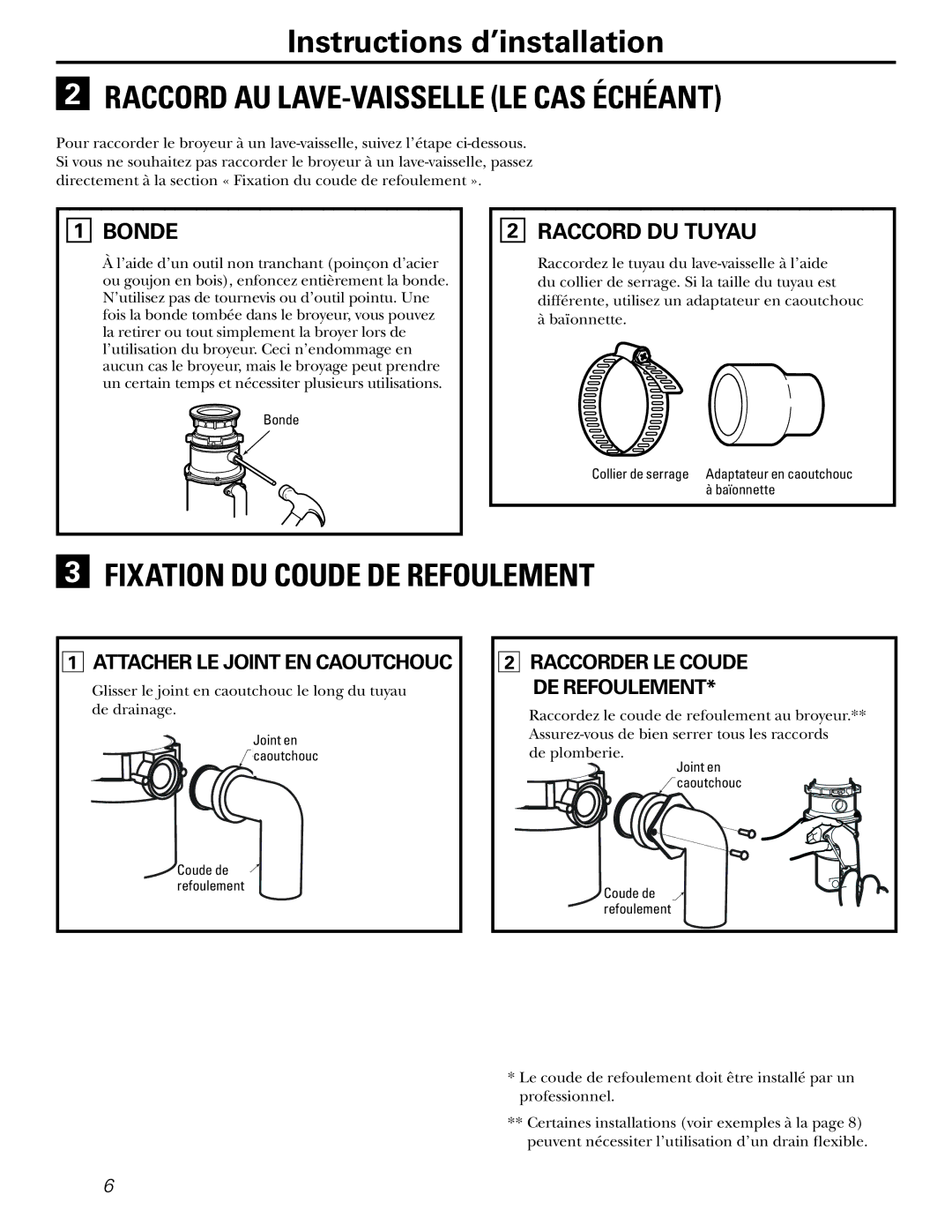GFC530V, GFC720V, GFB760V, GFC1020V, GFC320V specifications
The GE GFC series represents a modern innovation in food waste disposal systems, featuring several models including the GFC520V, GFC325V, GFC535V, GFC525V, and GFC320V. Each of these models is designed to cater to varying household needs while upholding high standards in efficiency, durability, and environmental responsibility.The GE GFC520V unit boasts a powerful 3/4 horsepower motor, making it suitable for standard households generating moderate amounts of food waste. Its stainless steel grinding components enhance durability and performance, ensuring long-lasting usage without rust or corrosion. Additionally, the GFC520V features the patented Sound Seal Technology, which reduces operating noise, making it one of the quieter options available.
Next in line, the GFC325V model offers a slightly lower horsepower of 1/2, ideal for smaller households or light users. This model also includes the robust stainless steel grinding mechanism, which allows for the efficient processing of food waste. With a compact design, the GFC325V is an excellent fit for homes where space is at a premium.
The GFC535V takes it up a notch with a remarkable 1 horsepower motor, allowing it to handle larger volumes of waste with ease. This model is equipped with a multi-grind technology that ensures even tough food scraps are effectively reduced to a fine consistency, optimizing waste disposal. This model also incorporates the advanced Auto-reverse grind feature, which helps clear jams and maintain smooth operation.
For those seeking a balance between power and efficiency, the GFC525V model provides a 3/4 horsepower motor combined with multiple grinding stages, ensuring exceptional waste processing capabilities. Its innovative design focuses on reduced maintenance needs while delivering consistent performance.
Lastly, the GFC320V model combines practicality with performance for budget-conscious consumers. While it is tailored for minimal food waste disposal, it retains essential features like stainless steel components and a user-friendly installation process.
In summary, the GE GFC series highlights significant advancements in food waste technology, offering a variety of options to meet specific needs. Their reliable operation, efficient grinding systems, and a focus on reducing noise levels make them an excellent choice for waste management in today's environmentally-conscious kitchens.

